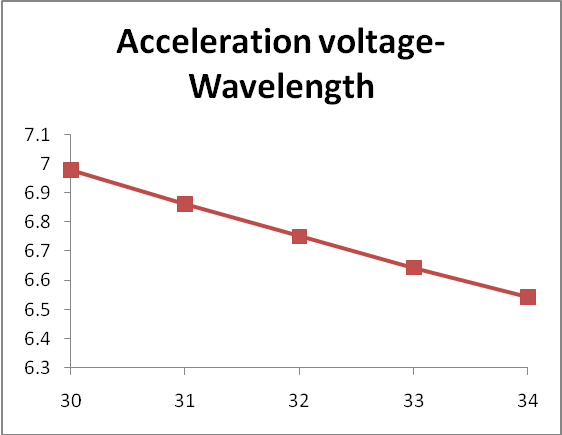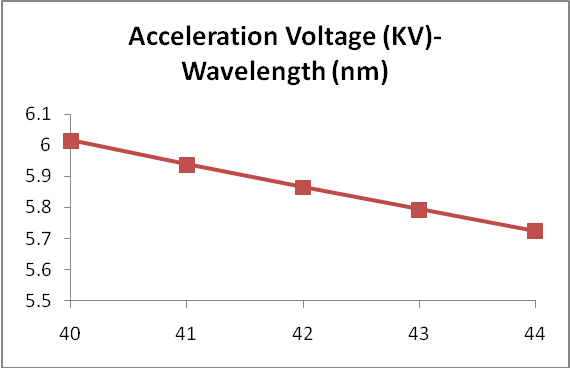Research Article | DOI: https://doi.org/10.58489/2836-5127/009
Spintronics and Optical Properties of Advanced Bio Materials
- Indian Institute of Science (IISC)-INUP &VVIT
- East European University
- Mallareddy Engineering College (MREC-A)
*Corresponding Author: Alla Srivani
Citation: Alla Srivani, Gurram Vasanth, GVS Subbaroy Sharma, (2023). Spintronics and Optical Properties of Advanced Bio Materials. Journal of Radiology Research and Diagnostic Imaging. 2(2). DOI: 10.58489/2836-5127/009.
Copyright: © 2023, Alla Srivani, this is an open access article distributed under the Creative Commons Attribution License, which permits unrestricted use, distribution, and reproduction in any medium, provided the original work is properly cited.
Received: 30 January 2023 | Accepted: 06 February 2023 | Published: 08 February 2023
Keywords: spintronics, optical properties, advanced bio materials
Abstract
Spintronics is an interactive combination of electronics and magnetics that has grown in popularity in the twenty-first century as nanotechnology has advanced. Spintronics is a new type of electronics that employs mutual control of magnetic and other physical signals, such as electrical and optical signals. Spin current has recently received a lot of attention as a basic idea in spintronics. Understanding spin current entails deciphering the mechanisms underlying the mutual control of diverse physical signals, which should lead to future advances in spintronics. The notion of spin current and its historical context are discussed first in this chapter, followed by a discussion of innovative materials for spintronics. Much attention is also dedicated to the physical phenomena that result from the coupling of spins.
Introduction
Optical techniques are becoming increasingly important in medical diagnosis and treatment, there is an urgent need to develop and refine materials platforms for bio-photonic applications.
To enable therapeutically useful bio-photonic devices for transferring in vitro optical techniques into in situ and in vivo application, it is especially necessary to design biocompatible and biodegradable
materials with appropriate optical, mechanical, chemical, and biological properties. This technological trend is driving the development of natural and synthetic polymeric biomaterials to replace brittle, non degradable silica glass-based optical materials.
We offer an overview of breakthroughs in polymeric optical material development, optical device design and fabrication techniques, and the associated applications to imaging, sensing, and phototherapy in this study.
Methodology & Results:
Sl.No | Acceleration Voltage (KV) | Wavelength (nm) 10-3 |
1 2 3 4 5 | 30 31 32 33 34 | 6.979 6.862 6.751 6.644 6.543 |
Sl.No | Acceleration Voltage (KV) | Wavelength (nm) 10-3 |
1 2 3 4 5 | 35 36 37 38 39 | 6.446 6.352 6.263 6.177 6.095 |
Sl.No | Acceleration Voltage (KV) | Wavelength (nm) 10-3 |
1 2 3 4 5 | 40 41 42 43 44 | 6.015 5.938 5.865 5.793 5.724 |
Optical materials are required to fabricate optical elements such as waveguides for bio-Photonic Photonics applications must have specified optical, mechanical, chemical, and biological qualities. The degree of transparency and the refractive index, as well as their Photonics applications must have specified optical, mechanical properties. Current synthetic biodegradable optical waveguide materials have restricted processability and designability, resulting in low-efficiency in vivo light delivery and limited functionality. A versatile material platform that can meet the diverse needs of optical (tunable refractive indices, low optical loss), mechanical (tunable mechanical flexibility for tissue compliance), and biological (biocompatibility, biodegradability, and bioactivity) functions is urgently needed. A citrate-based biomaterial platform has been investigated to overcome this issue. Citrate-based biomaterials are a class of polymers made by reacting citric acid with various diols and/or amino acids in ane-pot poly condensation reaction. Flexible chemical and design properties have enabled citrate-based biomaterials with tunable degradation rates (from a few days to over one year), adjustable mechanical strengths (tens applications such as optical imaging, optical sensing, and light activated infrared (IR) spectral areas have Materials for bio- The degree of transparency and the refractive index, as well as their spectral dependence, are frequently the most significant qualities to consider when selecting an optical material. High-transparency materials have chemical, and biological qualities. Ultraviolet (UV), visible, and Optical materials are materials that have the capability of controlling altering.
Conclusion
Biomaterials are a broad category of natural and synthetic materials that can be used alone or in combination. It is, by definition, a chemical that has been createdto interact with biological systems, primarily for medical and clinical purposes. The Increased understanding of biological systems and their interfaces with materials is opening up new avenues for the use of biomaterials, which have a diverse set of uses and requirements. Millions of patients throughout the world have profited from
biomaterials' technological advancement. Nonetheless, even as life expectancy rises, organ failure and catastrophic damage continue to crowd hospitals and degrade quality of life. Advances in disease understanding and tissue regeneration, together with increasing accessibility of modern technologies, have given unprecedented prospects for the use of biomaterials. Materials may now be swiftly generated and selecte
This collection showcases biomaterials research that has been published in Advanced Materials technologies, with an emphasis on targeted drug delivery vehicles, high-throughput material synthesis, minimally invasive biodegradable shape-memory materials, and the development of techniques to promote tissue regeneration through the introduction of instructional.
References
- O.C. Farokhzad et al. (2006), Targeted nanoparticle–aptamer bioconjugates for cancer chemotherapy in vivo Proc Natl Acad Sci U S A.
View at Publisher | View at Google Scholar - V. Bagalkot et al. (2006), An aptamer–doxorubicin physical conjugate as a novel targeted drug-delivery platform, Angew Chem Int Ed Engl,
View at Publisher | View at Google Scholar - A.H. Zisch et al. (1995), P.S. Stayton et al.Control of protein–ligand recognition using a stimuli–responsive polymer, Nature
View at Publisher | View at Google Scholar - C. Xu et al. (2004), Immortalize fibroblast-like cells derived from human embryonic stem cells support undifferentiated cell growthStem Cells
View at Publisher | View at Google Scholar - D.G. Anderson et al. (2004), A polymer library approach to suicide gene therapy for cancer Proc Natl Acad Sci U S A
View at Publisher | View at Google Scholar - Dr. Alla Srivani, Gurram Vasanth, Dr. GVS Subbaroy Sharma, M. Srinivasa Rao, Dr. P Ramesh, & Dr. A Raghavendra. (2022). Emerging Trends in Transmission Electron Microscopy for Medical Applications. Global Journal of Science Frontier Research, 22(A6), 57–59. Retrieved from https://journalofscience.org/index.php/GJSFR/article/view/102542
View at Publisher | View at Google Scholar - C.J. Flaim et al. (2005). An extracellular matrix microarray for probing cellular differentiation Nat Methods, Fan et al., Fan VH, Tamama K, Au A, Littrell R, Richardson LB, Wright JW, Wells A, Griffith LG: Tethered EGF provides a...
View at Publisher | View at Google Scholar - A. Khademhosseini et al. (2006). Microscale technologies for tissue engineering and biology, Proc Natl Acad Sci U S A.
View at Publisher | View at Google Scholar - Dr. Alla Srivani et.al Investigation in Nano III-V Ternary InxGa1-xP semiconductor materials by chemical vapor deposition.
View at Publisher | View at Google Scholar - Dr. Alla Srivani et.al, Investigation of Optical Polarizability, Absorption coefficient and Energy Gap in AlxGa1-xAs Ternary Semiconductor Alloy.
View at Publisher | View at Google Scholar - Dr. Alla Srivani et.al, Determination of Wavelength and Peak position in Advanced Materials, International Advanced Research Journal in Science, Engineering and Technology-IARJSET, 2394-1588.
View at Publisher | View at Google Scholar

